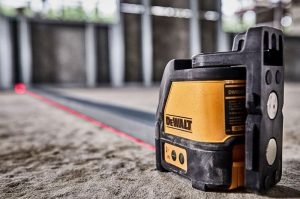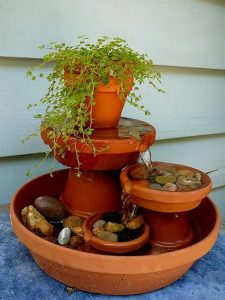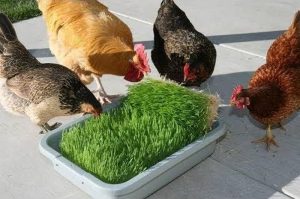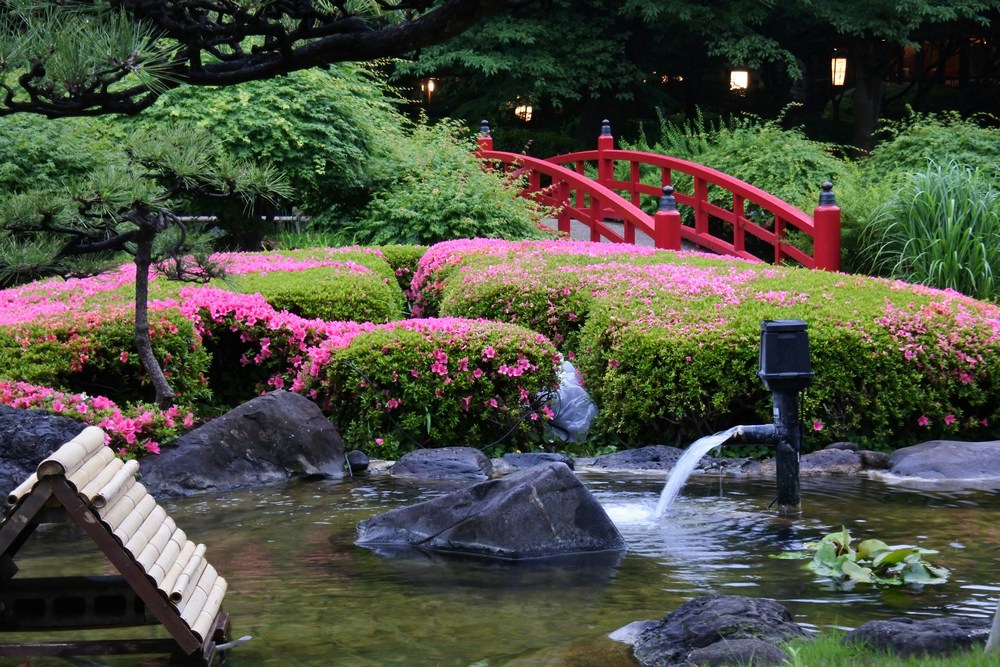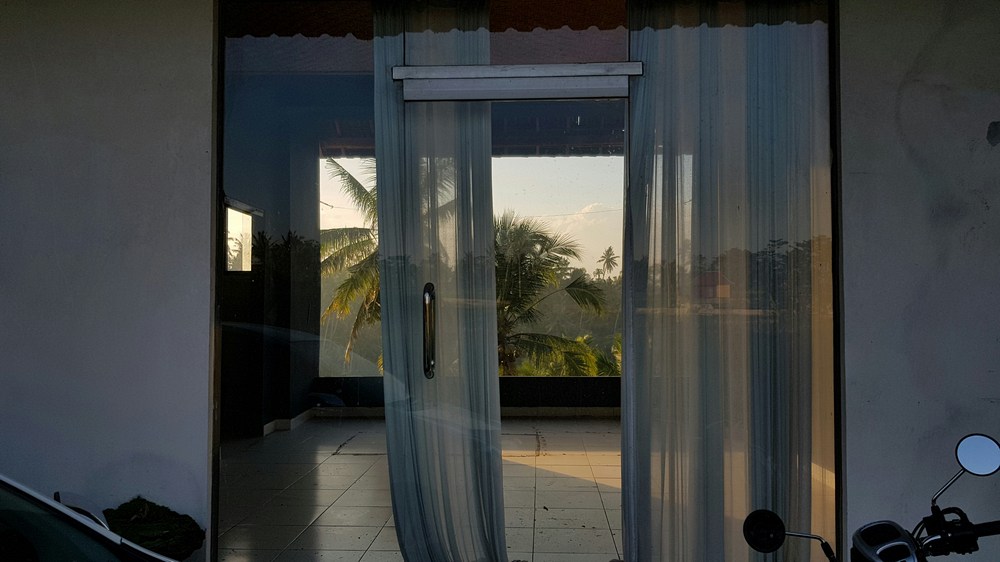Last Updated on May 24, 2024 by teamobn
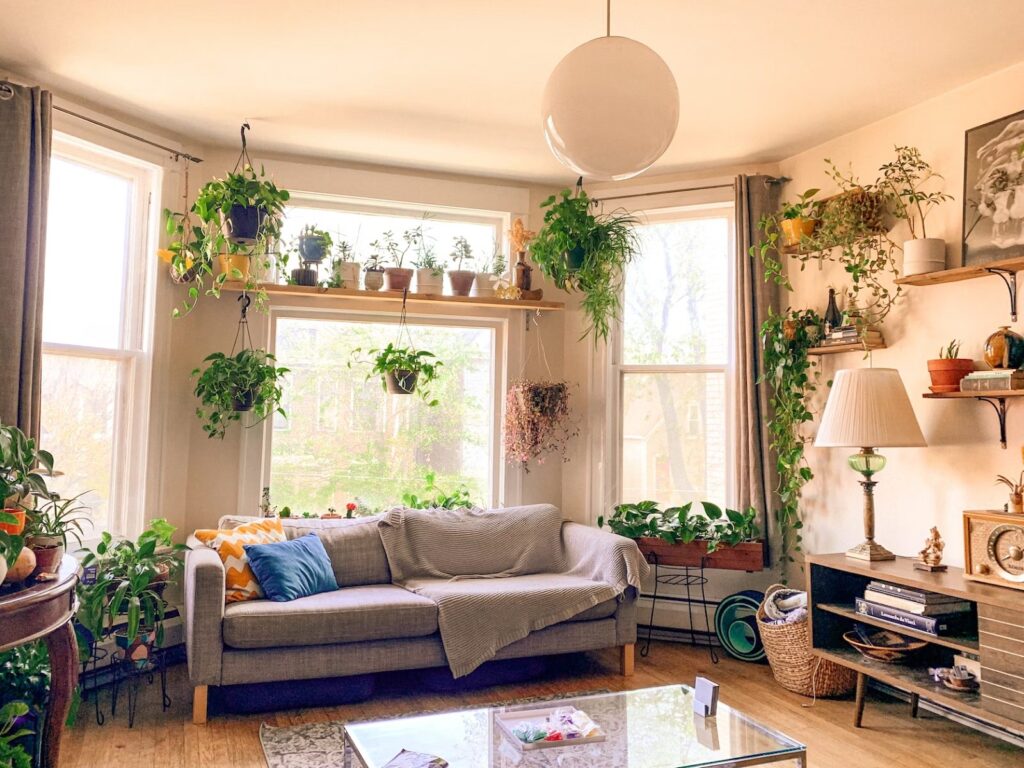
In the heart of bustling cities and amidst concrete jungles, the desire for a touch of greenery often seems like a distant dream. Yet, for many, the constraints of space often stand as the primary challenge.
But what if your limited space could be transformed into a verdant oasis, brimming with life, color, and fresh produce?
The wonders of DIY indoor gardening are not just limited to sprawling spaces. Even the tiniest nooks and crannies of your home can become a sanctuary for plants, herbs, and flowers.
Whether you’re an urban dweller yearning for a slice of nature or someone looking to maximize the potential of small spaces, this guide on easy DIY house garden ideas will unlock a world of possibilities. Dive in and discover how even the smallest corner can bloom into a vibrant green space.
Contents
Why Opt for Indoor Gardening?
It isn’t just a trend, but a lifestyle shift that addresses both functional and emotional needs. Here’s why bringing the garden inside has captivated hearts and homes worldwide:
Clean Air Benefits
Indoor plants absorb toxins and release fresh oxygen, acting as natural air purifiers, in an era where pollution is an increasing concern, having an indoor garden can significantly improve the air quality in your home. Snake plants, spider plants, and peace lilies, for instance, are renowned for their air-cleaning abilities.
Therapeutic Value
The act of gardening, even on a miniature scale indoors, provides therapeutic benefits. Nurturing a plant, watching it grow, and being surrounded by greenery can be profoundly calming and grounding. It’s no wonder that indoor garden is being recognized as a legitimate tool to alleviate stress, anxiety, and depression.
Fresh Produce Right at Your Fingertips
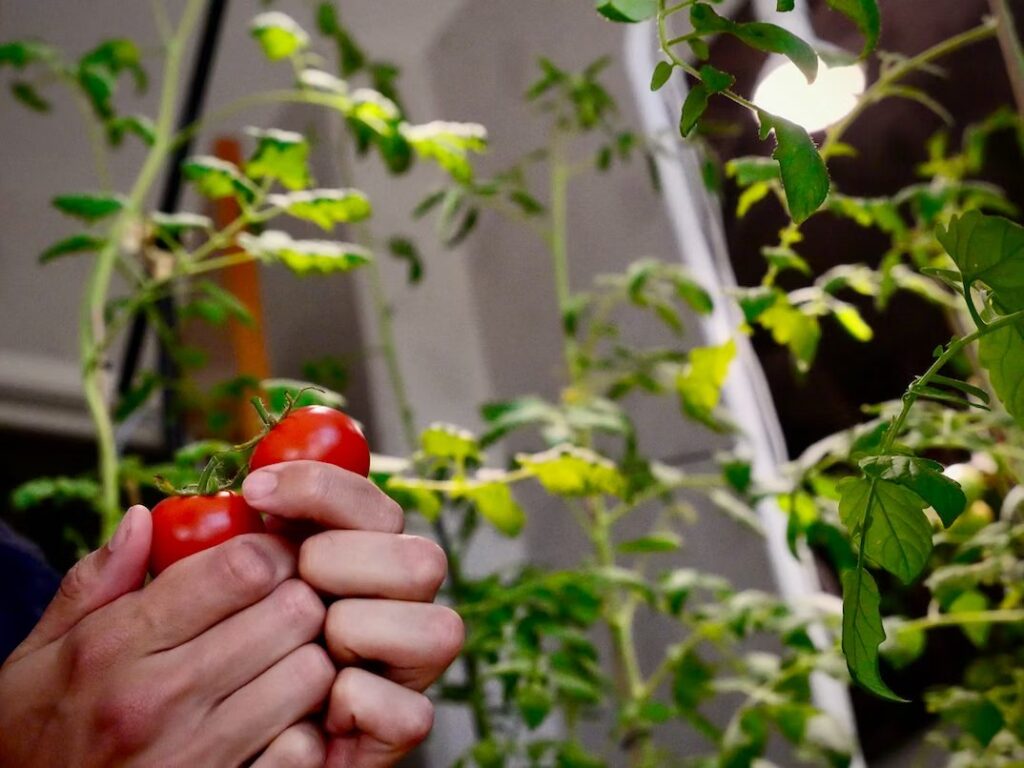
There’s a special kind of satisfaction in harvesting garlic greens from your windowsill or plucking ripe cherry tomatoes from a plant in your living room. It provides the dual pleasure of aesthetic beauty and functional produce. Whether it’s herbs for your culinary adventures, fresh greens for a salad, or even edible flowers as a garnish, the joy of harvesting from your own garden is unparalleled.
Aesthetic Appeal
Beyond their functional benefits, indoor gardens elevate the aesthetics of a space. They introduce color, texture, and a touch of nature. The vibrant greens contrasted with the hues of flowers can become focal points in any room, enhancing its ambiance.
Educational Value for Young Ones
If you have children, indoor gardens are a fantastic way to educate them about nature, responsibility, and the science of growth. It’s a hands-on lesson in biology, ecology, and patience!
DIY Indoor Garden Ideas for Small Spaces
Having limited indoor space might seem like a constraint, but with a touch of creativity and DIY enthusiasm, every corner can blossom into a vibrant garden oasis.
Vertical Gardening
When horizontal floor space is scarce, consider the untapped potential of your vertical space for your indoor garden. Transforming walls and room dividers into living art pieces is a great start for vertical gardening. An old wooden ladder leaning against a wall can act as a rustic shelf for potted plants.
Alternatively, sturdy shelves affixed to walls can serve as platforms for your favorite flora. For an innovative solution, try hanging fabric organizers on walls and filling their pockets with plants.
Container Gardening
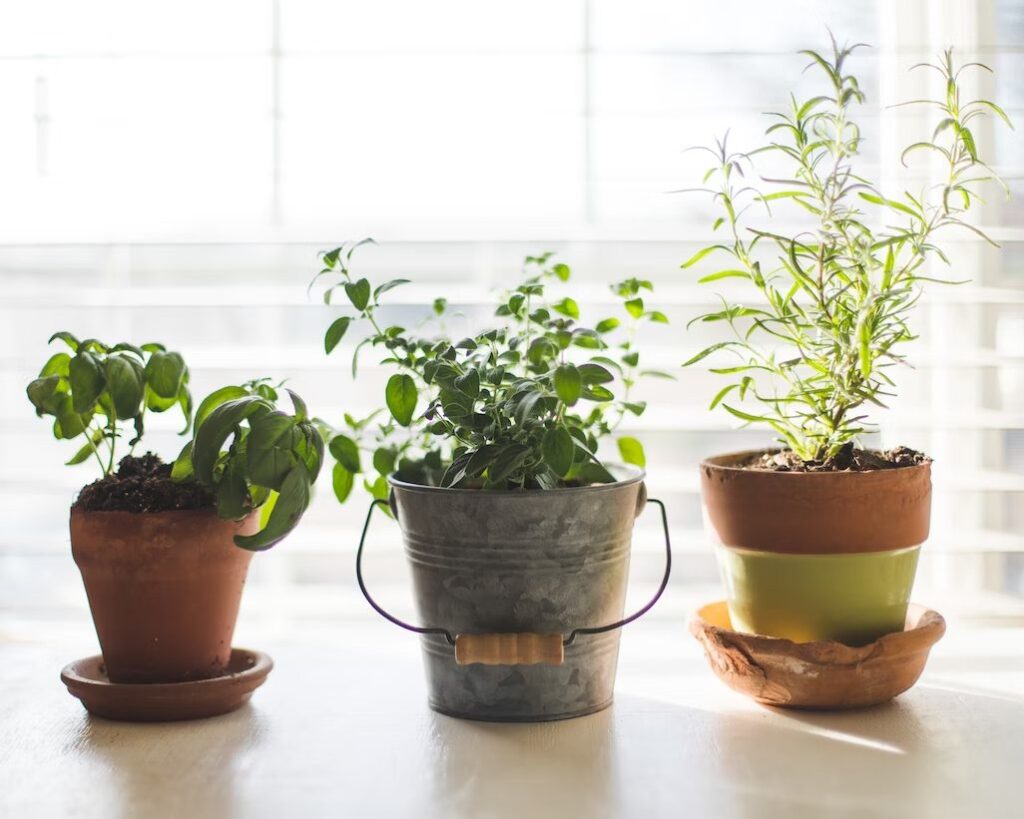
Whether you are growing peperomias or spider plants, containers are great choices. The beauty of container gardening lies in its flexibility. Old tin cans, wooden crates, or even discarded footwear can be transformed. With a few drainage holes and a touch of paint or decoration, these items metamorphose into one-of-a-kind planters, adding personality to your space.
Windowsill Herb Garden
For those fortunate enough to have window access, a windowsill herb garden is a delightful addition. Not only do these sun-loving herbs add a fresh aroma to your home, but they also offer culinary delights.
Imagine small recycled containers like glass jars or tin cans lined up on your windowsill, each brimming with a different herb. You can even label each container with chalkboard paint to keep things organized and rustic.
Hanging Gardens
For an element of elegance and depth, consider creating a hanging indoor garden. Pots and planters suspended from the ceiling or high shelves can be quite the visual treat. Delve into the timeless art of macramé to create your own hanging plant holders. These handcrafted holders, tailored to your décor preferences, bring both style and nature to your indoor space.
Hydroponic Systems
Lastly, for those keen on embracing modernity, hydroponic systems are worth exploring. This innovative, soil-less indoor garden cultivation method uses nutrient-infused water to nurture plants. It’s an efficient and clean approach ideal for small spaces.
Start your hydroponic journey with a basic kit or craft your own setup with containers, a water pump, and the right nutrient solution.
Terrariums
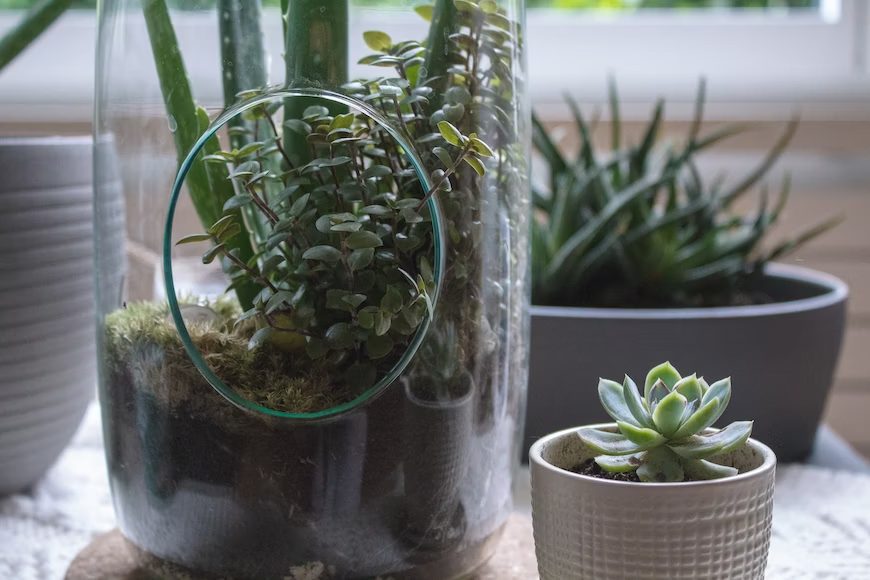
Terrariums offer a whimsical approach to indoor green spaces. These mini-ecosystems, encapsulated in clear containers, are perfect accents for desks, shelves, or coffee tables.
By layering pebbles, activated charcoal, moss, and soil in a clear container and adding small plants like succulents or ferns, you craft a micro-garden that’s both captivating and low-maintenance.
Choosing the Right Plants for Your Indoor Garden
Creating an indoor garden offers a delightful way to bring a bit of nature into your home. However, the success of your green oasis largely depends on selecting the right plants that are suited to an indoor environment. Here’s how you can make informed choices to ensure your indoor garden thrives.
Understand Light Requirements
Different plants have varying light needs, and understanding these can prevent common problems such as leaf drop or poor growth. Assess the light levels in your home to determine suitable spots for your indoor garden. For low light areas, consider plants like snake plants and pothos, which are forgiving and thrive in less sunny environments. For brighter spots, succulents and cacti make excellent choices as they love direct sunlight.
Consider Space Limitations
Space is a crucial factor when choosing plants for your indoor garden. Small spaces benefit from compact plants like spider plants or herbs that can be grown on windowsills or in small hanging planters. If you have more room, you might consider larger plants, such as fiddle leaf figs or rubber plants, which can act as natural focal points in a room.
Maintenance and Care
Think on how much time and work you can commit to plant care while choosing plants. Succulents or ZZ plants are low-maintenance plants that can be perfect for your indoor garden if you’re a busy person or travel frequently. For individuals who lead busy lives, these plants are ideal because they need little watering and maintenance.
Assess Humidity and Temperature
Regarding humidity and temperature, different plants also demand varied conditions. Tropical plants, such as peace lilies, ferns, and orchids, require frequent spraying if your home is dry. These plants prefer high humidity levels. Conversely, cacti and succulents may flourish in spaces with lower humidity levels since they like dry air. To maintain your plants’ health and growth, it’s critical to match their preferences with the environment in your house.
Check Growth and Spread
Understanding the growth pattern and potential size of plants is crucial. Some plants, like the Monstera, can grow very large and require space to spread. Ensure you have adequate space not just for the plant’s current size, but also for its potential growth in the years to come. This consideration is vital to avoid overcrowding and to maintain the aesthetics and health of your indoor garden.
Plant Toxicity
It’s critical to think about plant toxicity if you have small children or pets. Ingesting many well-liked indoor plants, such dieffenbachia and philodendrons, can be deadly. For everyone in the family to enjoy your indoor garden, always use non-toxic species like spider plants, Boston ferns, or bamboo palms.
Soil and Watering Needs
Schedules for watering and soil types vary for each plant. While some plants do best in dry, well-draining sandy soil, others may need damp, loamy soil to flourish. Verify that you can supply the proper kind of soil for each plant by looking at its particular requirements, and then modify your watering schedule appropriately. This will lessen problems like underwatering and root rot, which are typical under uneven soil and watering regimes.
Selecting the proper plants for your indoor garden involves more than simply design; it’s about making your house a vibrant, sustainable green area. Your indoor garden, when chosen appropriately, will improve the quality of the air within your home as well as its aesthetics.
Tips for Care and Maintenance
Nurturing an indoor botanical space requires attention to a few key aspects:
- Light Conditions: Monitor how your plants react to light. Pale or elongated stems may indicate insufficient light while yellowing leaves can suggest excessive sunlight. Adjust their position as needed.
- Watering: Balance is key. Water plants when the top inch of soil feels dry, but adapt based on the specific plant’s needs and current climate.
- Pest Management: Inspect plants for pests such as aphids or mealybugs. Utilize natural remedies like neem oil for treatment, and ensure good air circulation to deter pests.
- Pruning: Remove dead or yellowing leaves and spent flowers to promote healthier growth. For some plants, occasional trimming can encourage a bushier appearance.
- Repotting: If plants outgrow their containers or roots emerge from drainage holes, it’s time to repot.
Conclusion
Embracing indoor gardening transforms even the tiniest of spaces into lush, green sanctuaries. With a sprinkle of creativity and a touch of care, you can cultivate a garden that not only beautifies your home but also uplifts your spirit.
Whether you’re a seasoned green thumb or a budding gardener, remember that every plant you nurture is a testament to growth, patience, and nature’s enduring magic.

